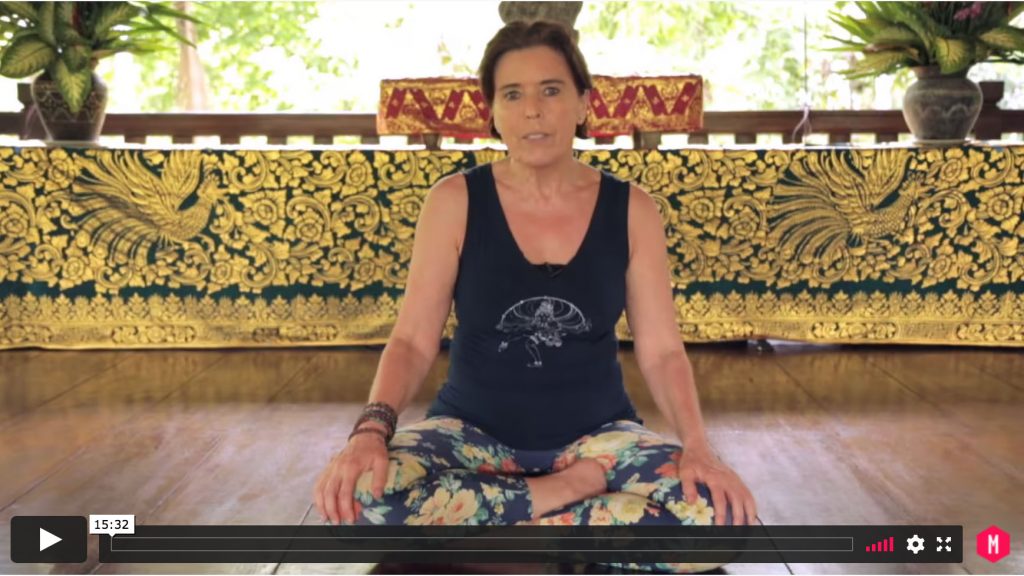
It can be tricky to apply yoga philosophy to modern life. In this article we explore how we can fold in ahimsa or non-violence into our daily lives. Find out how to take respectful action, speak out and spend better.
What is Ahimsa?
Ahimsa is a key ethical principle arising in South Asia. The Sanskrit word literally means ‘without’ or ‘non’ violence. It is a moral principle, shared by Jains, Buddhists, Hindus and Sikhs.
What sort of harm or violence?
The word violence can suggest physical acts of violence, but the Sanskrit word includes word-based and thought-based ways of causing harm. Our actions originate in our thoughts and by eradicating harmful thoughts we can perhaps begin to lead more equitable and compassionate lives.
How can we apply ahimsa today?
‘Non-Violence’ or ‘Non-harming’ can seem to be passive. We might not actively set out to harm anyone but anything, but perhaps, it is worth thinking of ahimsa in more active ways.
Gandhi took the principle which can sound passive – it is about ‘non-action’ and turned it into a tool for nonviolent mass action. He used it to fight against colonial rule and racial discrimination and untouchability, calling it ‘Satyagraha’ which means truth force. Students of yoga philosophy will recognise ‘satya’ as the second yama from Patanjali’s yoga sutras. For Gandhi, these two precepts were the two that mattered the most. “Non-violence is a power which can be wielded equally by all – children, young men and women or grown-up people…When non-violence is accepted as the law of life, it must pervade the whole being and not be applied to isolated acts.”
Perhaps we can do the same: we could turn something active. We can seek out ways in which to mitigate the impact of harm or violence, or make active choices ourselves.
Yoga is a contemplative tradition. After reading our suggestions below, why not research the topics that resonated with you further? Or you could journal about the questions being raised. Finally commit to taking action, however subtle, through self-study by determining where you might be causing harm and exploring how you might change your behaviour.
Ahimsa on and off the yoga mat
As yoga practitioners the mat is a great starting point to explore our understanding of ahimsa. How much do you push yourself in your practice? Where does the impulse to push yourself arise from? We can certainly cause ourselves physical injury on our yoga mats by not paying attention to how hard we are pushing ourselves, but how often do we pause and listen to the voice in our heads? Is this voice causing us harm? What is it saying to us? Are we comparing ourselves unfavourably to others? Noticing our thoughts and our attitude to our yoga practice is a great way to tune in to our attitude and understanding of ahimsa.
Once we have begun to understand our tendencies on the yoga mat, we can start to pay attention to how this translates off the mat. Do you overstretch in life? Do you listen to your instinct? Does your tendency to compare your yoga practice, turn into a tendency to compare yourself to others and to then either judge yourself or them? Are you able to turn these tendencies around and take action by spreading more kindness in a non-violent way?
1. Respecting yoga traditions
Speaking of yoga, though, have you considered whether there is any harm caused by how you choose to practice yoga? Are you practicing yoga in a respectful way? Yoga is an ancient spiritual practice that is often repackaged purely as physical exercise which is derived from hatha yoga but is often stripped of its spiritual core. Respecting traditions is about acknowledging yoga’s roots and understanding the context within which the practice has evolved. Ahimsa, might in this case require further research or study.
2. Speaking Out
Do you speak out to defend those whose voices might otherwise not be heard? It can be difficult to speak out, particularly when our own interests are being served. It isn’t easy to call out bullying or even to refrain from speaking badly of others. A little banter or gossip can seem harmless, but is it causing harm? Think back to the example of Gandhi. He achieved a great deal without compromising his non-violent principles. He was able to communicate what he wanted and make space for freedom.
In the 1960s and 1970s the psychologist Marshall Rosenberg began to develop a method that has come to be known as non-violent communication. It is based on the principles of non-violence but is not necessarily a means to end disagreements but rather a way to increase empathy and improve the quality of life and communication for those involved in using the method. The process involves experiential learning; careful listening and frankness about one’s emotional state. It is about the intention that one invests in one communication. Notice for yourself, your intention when trying to persuade others about your point of view. Are you ‘intent’ on getting what you want, or is your focus more on fruitful communication and mutual respect? Do you listen, thinking about what you are going to say, or with the attention and respect the speaker deserves?
3. Putting your money where your mouth is
When it comes to ahimsa, it pays to think about how and where you spend your money. Making active choices about where you buy your food or clothes can have a massive impact not only on others but also on yourself. We might be aware of the harm we are doing when we purchase items that have a detrimental effect on the environment but have you considered the human costs of your purchases? Ultimately every choice you make has an impact, and it all comes down to balance.
One way of making wiser decisions when it comes to your money is to spend on behalf of your future self. Ask yourself, what advice your future self would give to you now, and then act on it. Your behaviour is shaped by your view of your own future. Your future self only exists in your imagination. You can decide on how that future self acts. Harvard psychologist, Dr Daniel Gilbert suggests that you start by asking yourself what you could do today that will help you to make progress towards your future self. Most likely the answer will take you out of your comfort zone because you are comfortable as you are today. If you persist though, you will have transformed your habits, become more psychologically flexible and have transformed into the person you want to be.
>>Watch this talk from Vidya Heisel to delve more into ahimsa<<






Leave a Reply